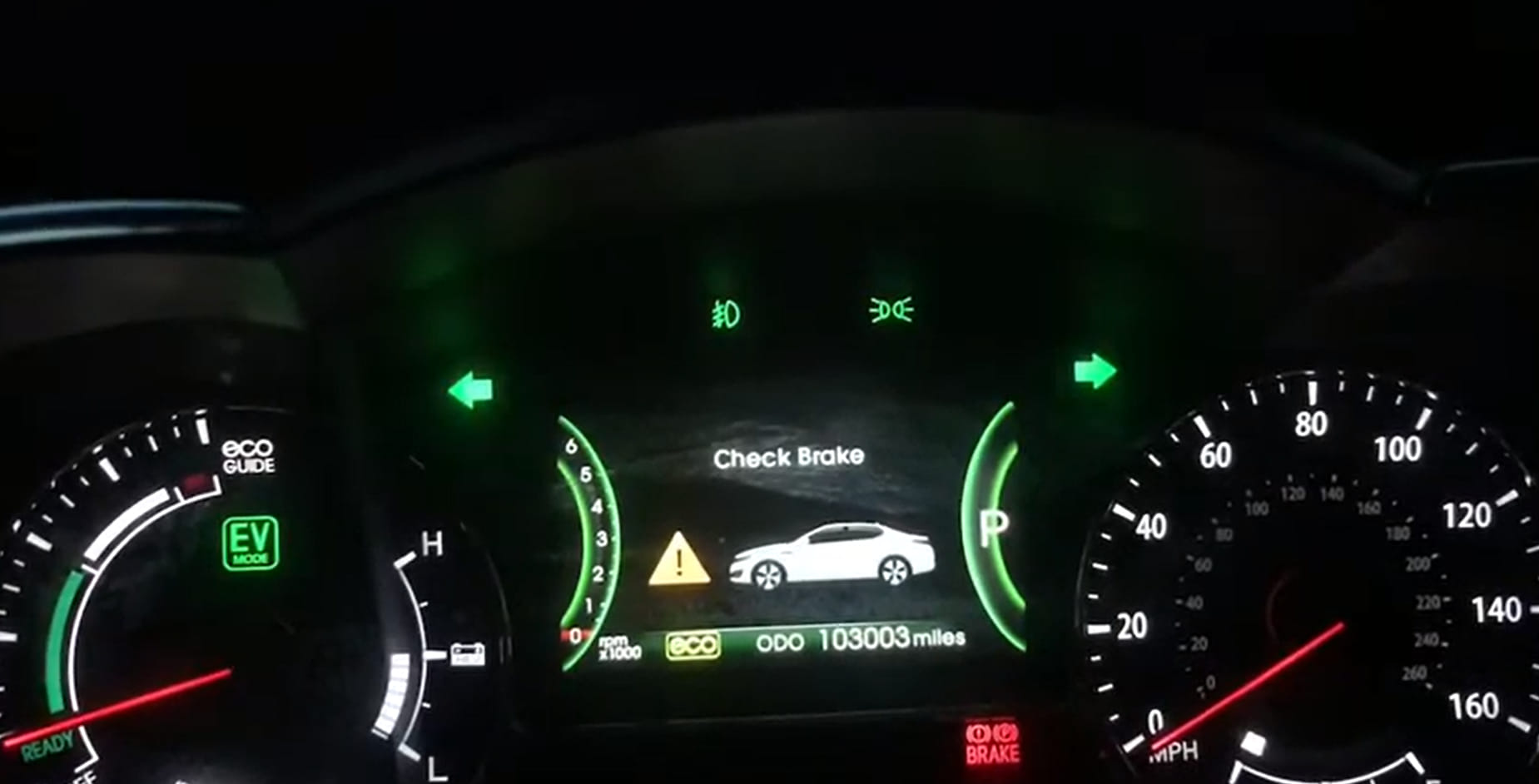So you have noticed that the Kia Optima check brake warning won’t start your vehicle. And now, you are wondering what may have gone wrong.
When you notice the warning light appearing on the dashboard, it means that a certain component of your vehicle is not right. This is why you should not ignore such warnings.
If you have the check brake warning light come on, then you need to be aware of the causes behind this notification and what you can do about it.
Let’s investigate further and get this issue straightened out once and for all.

Contents
Kia Optima Check Brake Warning Won’t Start The Car
Basically, there are certain reasons why the check brake warning light illuminates. For instance, it could be a problem with your handbrake, brake fluid, faulty brake lights, ABS sensor warning, low-voltage battery, and worn or faulty brake pads.
Let us have a look at these issues more closely:
1. Brake Fluid
If the brake fluid is low, then the warning light will turn on. This fluid is in a reservoir and located underneath the bonnet on the driver’s portion of the vehicle. If the brakes fail to work, it could be that there is contamination with the brake fluid, the fluid level is too low, or there are air bubbles in the brake system.
You may either top up the brake fluid or have the brakes replaced, depending on the issue.
2. Leaks
It is also possible that there is a leak in the fluid hoses or with your brake caliper. But first, inspect the brake fluid level. If it has gone low, check underneath the car for drips or puddles.
3. Brake Fluid Sensor
If the brake system appears to be perfectly fine, yet the warning light persists, then a sensor failure may be the problem. The sensors are sensitive components and can be prone to failure or damage. Test the fluid level sensor and see if this is the cause of the problem.
4. Brake pad and disc issue
And lastly, when brake pads and discs are worn, they are unable to work as they should. This is why more brake fluid is required, and this can also deplete the fluid level in the sensor.
Now, it may also be possible that the handbrake light persists. When it illuminates,the handbrake is most probably not released fully, which is why the brakes do not stick. Release the manual handbrake completely to make sure it is just as it should be.
But in the case of an electronic parking brake that requires a button to operate it, it should release correctly. Otherwise, your mechanic should be able to get it fixed.
A blown fuse or damaged brake light can also cause the problem with the check brake warning. Have the bulb or fuse replaced and be sure to check the owner’s manual to know exactly where you can locate these fuses – and which one causes the brake lights to turn on.
Many modern cars, as well as some older vehicles, have anti-lock brakes fitted in them as a standard feature. This feature makes it possible to minimize lock-ups and prevent the car from skidding uncontrollably.
The ABS sensor has its specific control module. Thus, when it registers any issue or malfunction,the warning light turns on. This is why you would need a diagnostic tool to determine the problem. Have your mechanic scan the system for issues and then proper advice on what needs to be repaired will be given to you.
If the issue is caused by low voltage problems, this means that the battery is unable to supply the right voltage to the electrical system of your vehicle. This then leads to all types of errors. When the lights flicker or not as bright as they used to be, then this needs to be addressed right away.
And last but not least, damaged or worn brake pads may lead to this check brake warning. Brake pads have their sensors, and once the material is about 15 percent worn out, the warning light comes on to alert the driver that it is time for a change.
It is quite dangerous to drive your vehicle with a worn brake pad The discs also run the risk of getting more damage, this is why you should have these pads replaced sooner than later.
Read More: Kia Sorento Key Fob Not Working? Try These Tips!
Wrapping Up
When your check brake warning light turns on – and stays lit – when you start the car, do not even attempt to drive. You need to turn the car off and check what is causing the problem and get it addressed.
If you continue to drive and ignore this check brake warning, this can lead to further damage to the system. Worse, this can lead to safety issues.
So, make sure you inspect the areas mentioned that may be causing the problem and have problematic components replaced sooner than later. This way, you can drive with a greater peace of mind and keep yourself safe and others on the road.
Read More: